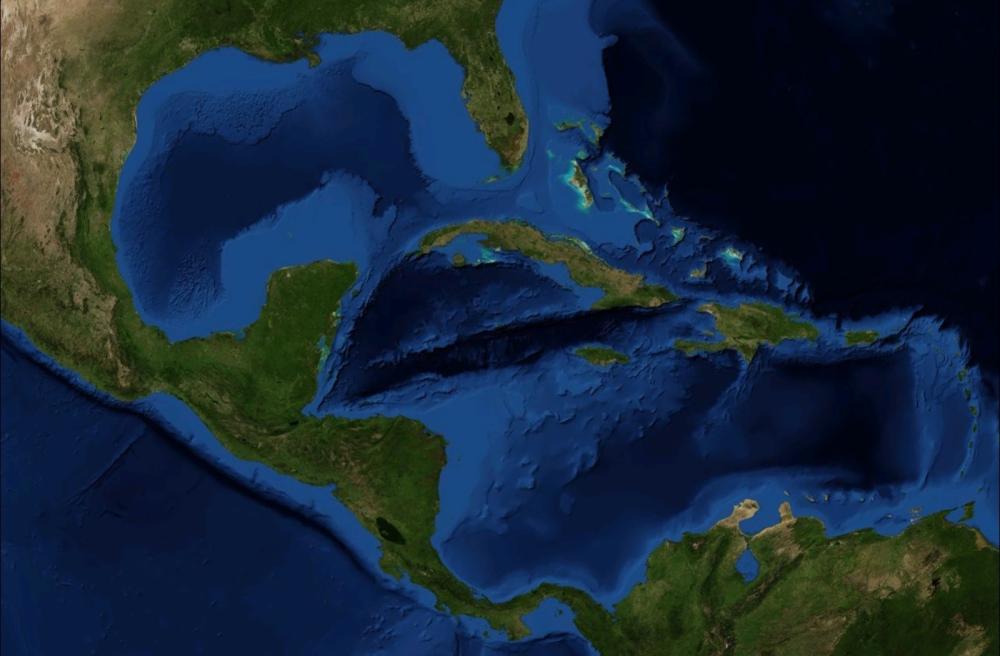The Caribbean Sea is located in the western tropical region of the Atlantic Ocean , and it is surrounded by several islands known as the Caribbean Islands or the West Indies . The Caribbean Sea extends from the southeastern Gulf of Mexico to the northern coast of South America, and is bordered to the east by the Antilles Archipelago and to the west by Central America. The Caribbean Sea is famous for its clear turquoise waters and white sandy beaches, making it a favorite tourist destination for many people around the world.
### Geography and terrain
The Caribbean Sea extends over a wide area of about 2.754 million square kilometers. The Caribbean region includes more than 7,000 islands, the largest of which is Cuba. The topography of these islands varies between coastal plains and inland mountains, and these geographical diversities are home to a wide variety of plants and animals.
### History and culture
The origins of Caribbean culture go back to several ancient civilizations such as the Arawaks and Caribs. But with the arrival of European explorers in the late 15th century, especially Christopher Columbus, a period of radical change began. The region became a center for European trade and colonization, as powers such as Spain, France, Britain, and the Netherlands vied for control of the islands.
This complex history greatly influenced Caribbean culture, which became a mixture of African, European, and indigenous influences. This cultural diversity is reflected in music, dance, and cuisine. The area is known for its reggae music from Jamaica, Cuban dance, and Caribbean samba.
### Economy
The Caribbean's economy relies heavily on tourism and agriculture. Tourism is the main source of income on many of the islands, with visitors coming to enjoy the beautiful beaches, water sports, and local culture. Besides tourism, agriculture plays an important role in the economy, with products such as sugar, bananas, and coffee grown.
Some countries also contribute to the economy through small-scale and manufacturing industries, fishing, and free trade. Furthermore, some Caribbean countries have strong financial positions and are popular destinations for international investments.
### Challenges
Despite its natural beauty and tourism wealth, the Caribbean region faces many challenges. The region is vulnerable to natural disasters such as hurricanes and earthquakes, which can cause severe damage to the infrastructure and local economy. In addition, some countries face economic and social problems such as poverty, unemployment, and inequality.
Climate change is also a major threat, as sea levels rise and lead to coastal erosion, affecting coastal communities, tourism and agriculture.
### Conclusion
The Caribbean Sea is one of the most beautiful regions in the world thanks to its picturesque nature and rich and diverse culture. Despite the challenges facing the region, it remains a distinctive tourist destination and an important cultural and economic hub. Preserving this natural and cultural heritage requires a collective commitment to confront environmental and economic challenges, and ensure a sustainable future for future generations.

